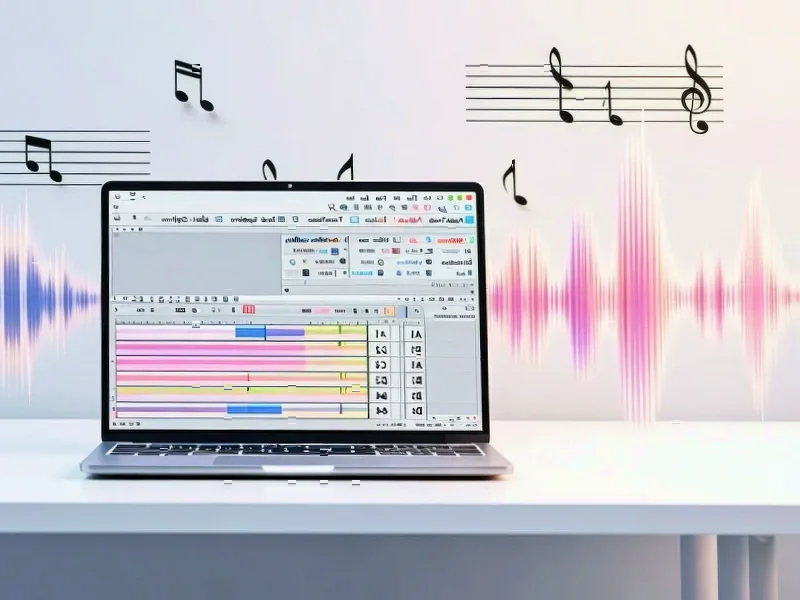According to TechSpot, YouTube has launched several new features specifically designed for living room viewing, including an AI-powered upscaling system that converts standard definition videos to HD quality with plans to support resolutions up to 4K. Kurt Wilms, senior director of product management for YouTube on TV, confirmed that creators retain full control with the ability to opt out of AI upscaling, while viewers can choose between original and enhanced “super resolution” versions. The platform is also dramatically increasing thumbnail file size limits from 2 MB to 50 MB to enable 4K-resolution thumbnails and experimenting with larger uploads with select creators. Additional TV-focused improvements include immersive channel previews, channel-prioritized search results, and scannable QR codes for shopping-tagged videos to drive conversions. These developments represent YouTube’s strategic pivot toward optimizing for couch-based consumption.
Table of Contents
The Technical Reality Behind AI Upscaling
While YouTube’s announcement of AI upscaling sounds impressive, the technology faces significant technical challenges that weren’t addressed in the initial coverage. Traditional image scaling methods like bicubic interpolation have limitations that artificial intelligence attempts to overcome through neural networks trained on high-low resolution image pairs. However, the quality of upscaling heavily depends on the original source material – heavily compressed SD videos with artifacts may not upscale cleanly. The computational cost is substantial too; processing YouTube’s entire archive of older content represents one of the largest-scale image scaling operations ever attempted. Viewers should temper expectations, as AI upscaling can sometimes introduce its own artifacts or “hallucinated” details that weren’t in the original footage.
YouTube’s Strategic Pivot to Living Room Dominance
This move represents YouTube’s most aggressive push yet to capture the living room entertainment market, which has traditionally been dominated by streaming services like Netflix and traditional broadcast television. By optimizing for TV viewing, YouTube is acknowledging that YouTube consumption patterns have fundamentally shifted from desktop and mobile to larger screens. The timing is strategic – as connected TV advertising grows more valuable, YouTube positions itself to capture premium ad revenue that commands higher CPMs than mobile or desktop inventory. The enhanced thumbnail capabilities specifically target the TV interface where visual appeal matters more than on smaller screens. According to the company’s official announcement, these changes reflect years of research into how users interact with YouTube on television platforms.
Content Creator Implications and Challenges
For creators, these changes present both opportunities and challenges that extend beyond what was mentioned in the initial coverage. The ability to upload 4K thumbnails means creators will need to invest more in thumbnail production quality to remain competitive, potentially increasing production costs. The AI upscaling feature could breathe new life into older content libraries, but creators must carefully consider whether AI-enhanced versions accurately represent their artistic vision. The opt-out mechanism is crucial here – some creators may prefer their original lower-resolution work remains untouched for authenticity reasons. The shopping integration through QR codes represents a significant monetization opportunity, though it risks commercializing content in ways that might alienate certain audience segments.
Broader Industry Impact and Competitive Response
YouTube’s moves will likely trigger responses across the streaming industry. Platforms like Vimeo, Dailymotion, and emerging video services will need to consider implementing similar AI enhancement features to remain competitive. The technology could also pressure traditional broadcasters and streaming services to enhance their own legacy content libraries. What’s particularly noteworthy is how YouTube is leveraging its massive scale and Google’s AI expertise in ways that smaller competitors cannot easily replicate. The demonstration video showcasing these features highlights Google’s significant investment in making YouTube the premier platform for both content creation and consumption across all devices.
Implementation Challenges and User Experience Considerations
The rollout of these features faces several practical implementation hurdles that weren’t discussed in the initial announcement. Bandwidth considerations are paramount – while AI-upscaled content may look better, it will consume more data, potentially impacting users with data caps or slower internet connections. The interface complexity of offering multiple version selections (original vs enhanced) could confuse casual viewers who just want to watch content without technical decisions. There’s also the question of how YouTube will handle the massive computational load of upscaling content on-demand while maintaining streaming performance. These are the types of backend challenges that will determine whether these features deliver on their promise or become another set of half-implemented options that complicate rather than enhance the viewing experience.



